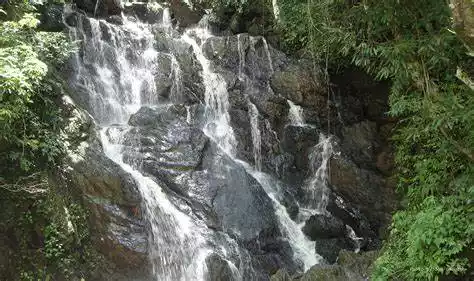District Churachandpur: A Comprehensive Overview
Introduction
Churachandpur, a district in the northeastern state of Manipur, India, is a region brimming with vibrant culture, diverse demography, stunning geography, and a rich historical background. This article aims to provide a detailed exploration of Churachandpur, covering its demography, culture, geography, topography, cuisines, history, notable poets and authors, and administrative structure.
Demography
Churachandpur is home to a diverse population, with a mix of indigenous tribes and communities. The major tribes include the Zomi, Hmar, Paite, Thadou, Vaiphei, and Lushai. The district's population is predominantly Christian, with small percentages of Hindus, Muslims, and followers of traditional indigenous religions. The people of Churachandpur are known for their communal harmony and strong sense of community.
Culture
The culture of Churachandpur is a vibrant tapestry of traditions, festivals, and art forms. Each tribe has its unique customs, dances, and music. Festivals such as Christmas, Easter, and local tribal festivals like Kut, Chavang Kut, and Thalfavang Kut are celebrated with great fervor. Traditional dances such as the Bamboo Dance and the Warrior Dance are integral to these celebrations, showcasing the district's rich cultural heritage. Handicrafts, including weaving, basketry, and pottery, are also significant aspects of Churachandpur's culture.
Geography and Topography
Churachandpur is located in the southwestern part of Manipur, bordering Myanmar. The district is characterized by its hilly terrain, dense forests, and numerous rivers and streams. The landscape is marked by lush green hills, fertile valleys, and scenic beauty. The major rivers flowing through Churachandpur include the Tuivai, Tuitha, and Khuga rivers, which contribute to the district's agricultural prosperity and natural beauty.
Diagram: Churachandpur's Geographic Layout
Cuisines
The culinary landscape of Churachandpur is a reflection of its diverse demography and rich natural resources. The staple diet includes rice, vegetables, and meat, often seasoned with locally grown herbs and spices. Traditional dishes such as Bai (a vegetable stew), Vawksa Rep (smoked pork), and Hmarcha Rawt (spicy chili chutney) are popular among the locals. The district is also known for its unique fermented foods and beverages, including Zu (rice beer) and Soibum (fermented bamboo shoot).
History
Churachandpur has a rich and tumultuous history, marked by the rise and fall of various tribal kingdoms and the impact of British colonial rule. The region has been inhabited since ancient times, with archaeological evidence suggesting early human settlements. During the British era, Churachandpur was a site of significant resistance against colonial rule, with several uprisings led by local tribal leaders. The district also played a crucial role during World War II, serving as a strategic location for Allied forces.
Poets and Authors
Churachandpur has produced numerous notable poets and authors who have contributed to the literary landscape of Manipur and beyond. Prominent figures include:
- T. Gougin: A renowned poet and writer who has penned numerous works in the Paite language, capturing the essence of tribal life and culture.
- Dr. Ngul Khan Pau: An eminent historian and author known for his extensive research on the history and culture of the Zomi people.
- B. Malsawmtluangi: A celebrated poet whose works reflect the socio-cultural fabric of Churachandpur.
Administration
The administrative structure of Churachandpur is well-organized, with a hierarchy that ensures effective governance and development. The district is divided into several sub-divisions, each headed by a Sub-Divisional Officer (SDO). The district administration is overseen by the Deputy Commissioner, who is responsible for implementing government policies and programs. Various departments, including health, education, agriculture, and public works, work in coordination to ensure the welfare of the residents.
Diagram: Administrative Structure of Churachandpur
Conclusion
Churachandpur district stands as a testament to the resilience and cultural richness of its people. From its diverse demography and vibrant cultural traditions to its stunning geography and historical significance, Churachandpur offers a unique blend of experiences. As the district continues to develop and modernize, it remains deeply rooted in its traditions, providing a harmonious balance between progress and cultural preservation.
